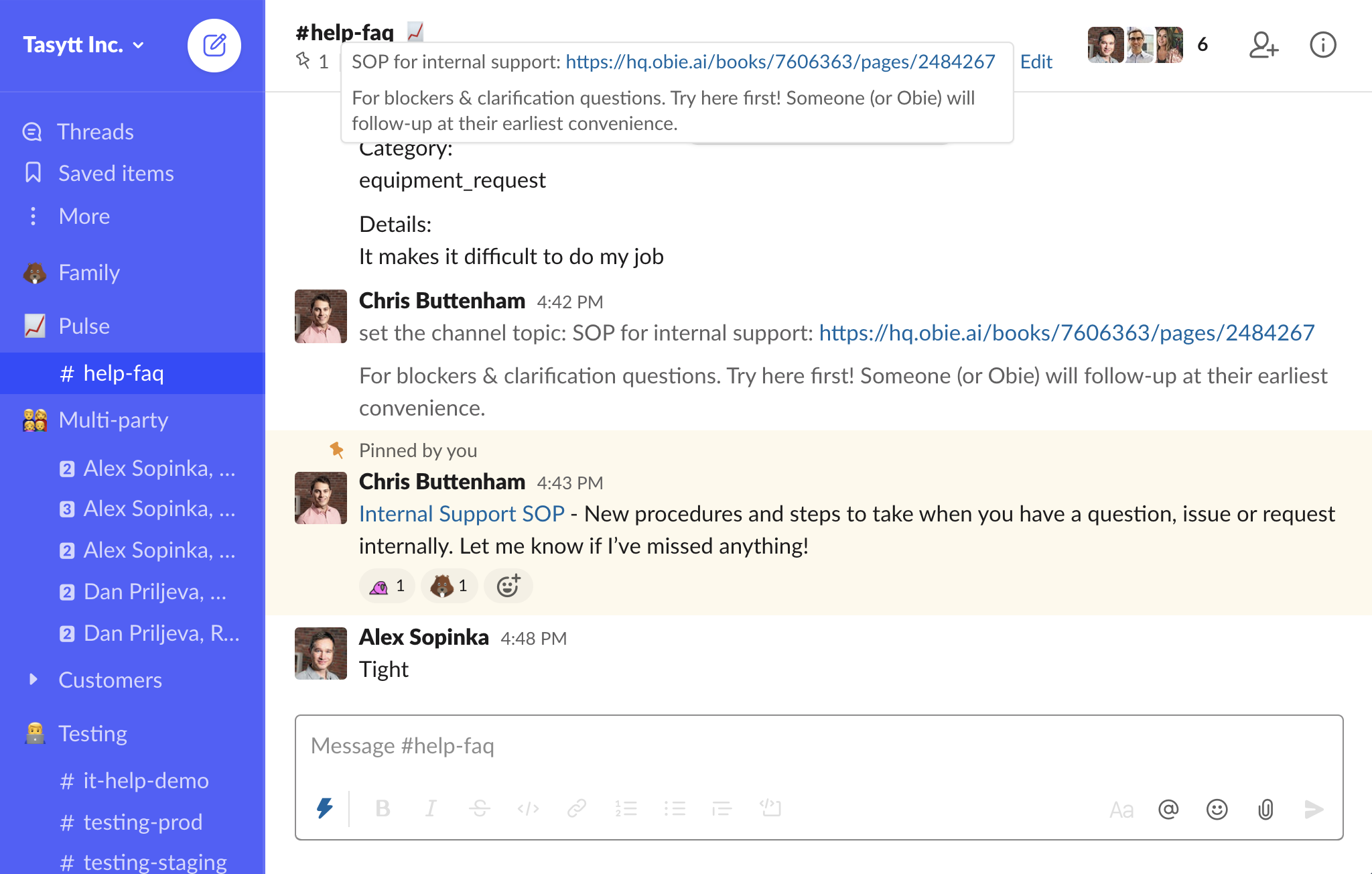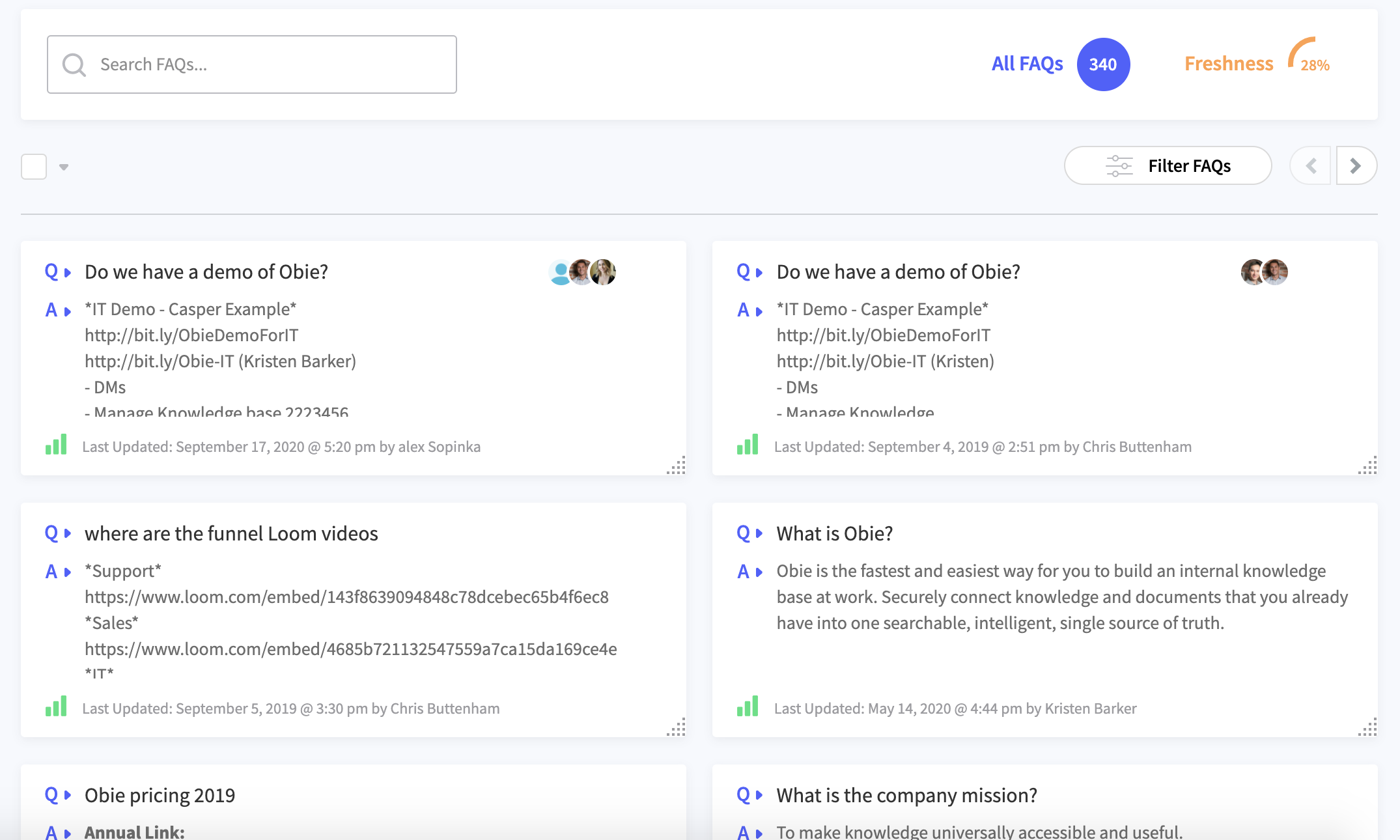Slack is the operating system of internal workflows. More and more, the tools and systems we adopt are working together to enable a seamless experience with Slack and the rest of our software stack. Every organization has knowledge to manage, capture and share. To ensure our organization's knowledge is more accessible and more useful, it’s important to have more than just a Slack integration; it must be deployed with careful consideration to how knowledge flows through your team and understands their existing habits.
In a way, Slack makes the existing self-serve options for accessing knowledge in our DevOps workflows seem less desirable and slower than “asking a channel,” so systems and solutions that integrate with Slack must do so deliberately to enable better, faster and more enjoyable ways to access the knowledge that you need to do your jobs.
Documentation in the Flow of Work to Streamline Ops
These days, most conversations with your teams end up in Slack. Slack is also home to important, sensitive and often timely questions from colleagues:
- “How does one gain access to our VMs?”
- “When did Slack API deprecate channels.info?”
- “Can anyone show me our deploy process for the main site?”
In Ops, it’s our responsibility that our engineers, developers and colleagues have a system for sharing and capturing knowledge that is used in our day-to-day workflows. The challenge within the modern organization is an overwhelming amount of information, notifications and shoulder tapping. This causes repeat questions, information bottlenecks and A LOT of wasted time.
An all too familiar workflow:
- A support seeker asks a question in Slack looking for a resource.
- They know the answer is probably in Confluence, but they’d rather just ask the question in Slack because maybe someone else will be able to quickly provide an answer.
- One or more subject matter experts takes time out of their busy workflow to try and aid the support-seeker.
- The subject matter expert switches context and accesses Confluence, grabs the link and shares the resource back in Slack.
- Meanwhile the support seeker is blocked by a lack of knowledge and the subject matter expert is distracted from their original task.
It doesn’t have to be this way! I've personally been working on knowledge management problems for over 6 years and have worked with thousands of organizations who have experienced similar problems. With that, we’ve picked up a lot of different tips and tricks along the way.
Consolidate Slack Channels—Less is More
When organizing your Slack workspace, it’s important to be deliberate about channel structure and the amount of new “silos” you’re actually creating with each new place for conversations and questions to be raised.
This rule doesn’t just apply to Slack channels either. In general, the least amount of places you need to go to access information, the better.
Organizations I've worked with who have thousands of employees have found that a smaller amount of channels is more effective. Depending on how your organization is structured, you may have to consult with IT on this one. If you only have control over what your team does specifically, we’d recommend keeping only 1 channel for common questions and issues. Avoid getting caught creating channels for sub teams and individual projects, if you can. With less channels, there are fewer places that need to be monitored and more visibility around these conversations that can increase transparency, but also reduce repeat questions and redundant issues.
This goes for Slack Enterprise Grid (SEG), too. Avoid spinning up a new workspace for what could have been a channel.
Bring Documentation into Slack—Wherever it May Live
Take advantage of Slack's “pinned” feature by attaching FAQs, readme’s and help articles to your Slack channels. Use the channel description and built-in welcome messages for streamlined onboarding into these channels. Channel consolidation also helps with searching the documents that have been uploaded to Slack.
Most knowledge base tools or documentation storage platforms have Slack integrations that you can use to funnel pertinent information into these channels to increase visibility of issues and org-wide knowledge. You could use a separate channel for this and denote “announcements only” so conversations and questions don’t get siloed here, but you reduce the noise when collaboration happens.
If you want to get even more advanced, there are a wide variety of Slack-based knowledge and file management apps that can suggest articles and answers to common questions when they naturally come up. You can also enable your team to have a dedicated place to access all of your collective knowledge by adding one of these Slack apps.
The goal with all of these systems and strategies is to enable better self-service and greater access to the collective knowledge of your team for streamlined ops.

Consider Knowledge Format
Believe it or not, your team’s knowledge can come in more formats than just the traditional wiki or knowledge base. Sure, how-tos, best practices and SOPs fit nicely in this format, but it's not ideal for frequently asked questions or actionable workflows.
Example: A set of config options frequently used in YAML files for spinning up servers is stored in an FAQ for easy search and sharing, directly within Slack.
- Limited styling
- Character limits (i.e. 1000)
- Simple copy and pasting
This ensures that the proverbial fat is unapologetically trimmed in every way humanly possible to ensure the fastest capture, access and sharing happens in the individual workflow.

This knowledge format doesn’t require a tool, but can be achieved with something like Confluence Questions. To tie your FAQs more tightly into Slack, you might consider tools designed specifically for Q&A.
When Knowledge Isn’t Enough
A component of these workflows that is often overlooked can be escalation of issues and questions that come up in Slack. You may have checked all of the boxes on our tips for streamlining internal support up until now, but it’s important not to forget about the workflow for triaging an issue when documentation isn’t enough. The path of least resistance is to ping a colleague on Slack instead of adding, say, a Jira issue. Or, perhaps, your team doesn’t yet have a formal process for escalating these types of situations.
- Use Slack workflow builder to create an easy-to-use request form triggered by a Slack shortcut.
- Use reacji (an emoji based language) for subtle and light-weight service desk system that requires less interruptions.
- Otherwise, take a look at the list of existing Slack integrations that bring tools like Jira into the flow of work.
Chris Buttenham is the CEO and Co-founder of Obie, a Slack-first knowledge management system.
Chris is also a member of The Ops Community. Sign up here to expand your developer workflow knowledge.

Comments